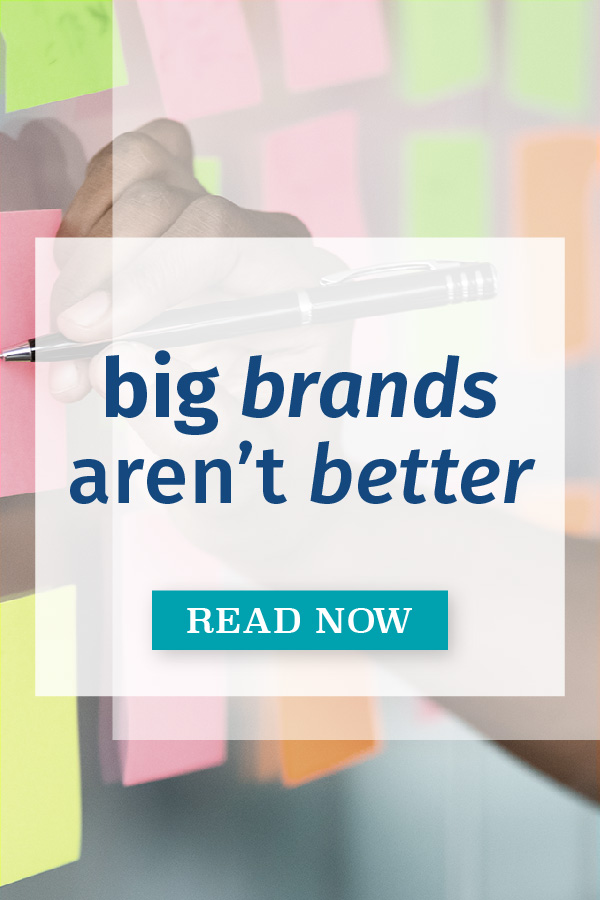Big Brands aren’t Better
Consumers are being overcharged at least $44B annually by choosing brand name products, and your next shopping trip’s expense could be reduced by up to a third should you opt for the generic version of the product. You might ask yourself, what am I paying for that is so much better?
A brand gains a competitive sales advantage when they either lower the cost of their product or are able to differentiate it from the competition and prove that it is worthy of its price point. The second tactic is how many big brands operate, but is it really true that they’re indeed superior, or does the power of branding make us want to spend that extra dollar?
Case Study: The Grocery Aisle
The best space to study this is the grocery store. Here, big brands are pitted against generics, side-by-side in a store-wide battlefield for the customer’s attention. In a survey, only about 23% of shoppers claimed to buy generic products regularly. It’s a commonly held belief that the higher price equates to a higher quality product.
Brands will use the same manufacturer as their competitor to undercut the competition. Great Value, Walmart’s private label brand, does just this with their Peanut Butter (produced by Peter Pan) and their Whole Wheat Bread (produced by the same company as Sara Lee).
It’s sometimes also the case that generics are identical to recognizable brands. Kirkland’s batteries are actually just repackaged Duracell, for instance. The manufacturer is happy because the two product lines are hitting different market segments and selling, Costco is happy because they’re getting a discount; but as a consumer, the smarter (and cheaper) choice is clear. Kirkland also does this with their bulk coffee in collaboration with Starbucks – after you grab a bag, read my blog on coffee roaster branding.
Better, or different?
Now it’s not always the case that branding is the reason for the increased cost of a product. Angel’s Envy Rye and George Dickel Rye may be from the same distillery, but the pricer of the two was picked and completed by a master blender. It’s that person’s experience you’re paying for – experience that also results in a superior product.
Expensive tech could share the same physical components of a cheaper counterpart, but it’s the proprietary operating system that justifies the cost. Whether that operating system is better is another conversation.
What to consider
As with most of my blogs, I’m not trying to force an opinion. If you should take away anything from reading this, it’s to challenge your assumptions. You may not even realize it, but many of the choices you make are heavily influenced by the TV commercials, magazine ads, and radio spots you’ve been exposed to your entire life.
It may seem like you’re making the more reliable choice, but the truth is store brands are just as focused on quality as the big dogs. Consider what you actually know about what you’re buying, and maybe remember this blog the next time you turn your nose upward at a bag of Aldi girl scout cookie knockoffs. They’re pretty tasty.
got a project?
Whether you need a new website or some help with your social media we are ready to start the conversation.

Chatbot Basics 101
Let's talk about chatbots. You know, those things you sometimes message on different applications...
Favorite Social Media
What is your favorite social media platform? Remember the days when there was just Myspace? Oh,...
Call to Action Do’s and Don’ts
There is such a thing as a bad call to action The goal of any page on a website, whether it's the...
Let’s Talk Web Navigation
The Web Navigation Bar (aka, the nav & primary menu) The web navigation bar is a custom-built...
